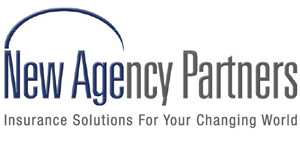
Golf courses and clubs are usually the scene of quiet tranquility, broken only by the sound of birds and the swing of a long shot toward the green. We’re fortunate to have access to some of the most beautiful golf courses and clubs, with greens attracting both players and families. But like any business, golf courses are exposed to unique risks that have the potential to seriously impact their operations. Whether you own or manage a public course or a private country club, here are eight risk factors you need to know about.
1. Storm Damage and Vandalism
The surfaces of both tees and greens of a course are susceptible to many risk factors including storm damage and possibly vandalism. Make sure your policy contains tee and green coverage and that the policy includes the wording “all playing surfaces.” Seek a high limit of coverage ($1,000,000 or more) and make certain there is no “per hole limitation.”
2. Flooding
As exposed by Super Storm Sandy and many other storms in recent history, most businesses that thought they had no risk of flood damage, soon fell victim to the direct and indirect consequences of flood water. Whether or not your course is in a designated flood zone, you should consider coverage in anticipation of an unforeseen weather event that can cause damage to your course. For example, think of your water holes and the perils that could ensue if they were to overflow their banks due to excessive rainfall. Since flood insurance is NOT part of an insured’s property or liability policies (it is a stand-alone policy that reacts independently from all other coverage), you will need to speak to your insurance advisor to add it to your insurance protection portfolio.
3. Pollution
The course’s rolling slopes of emerald green are not a product of nature alone. Chemicals used to keep the grass lush and neat create exposures for pollution that can often be overlooked. But you have to look beyond standard Herbicide and Pesticide coverage for over spraying because there may be a need to protect your course from other environmental risks such as tank leakage. Consider a complete pollution policy to address all of your exposures.
4. Employee Claims
On average, it’s estimated that three out of five businesses will be sued by their employees. Golf courses, just like any other business, are vulnerable from the pre-hire process through to a possible reduction in workforce. Claims can stem from just about anything, such as someone taking a “joke” the wrong way and being offended. In addition, key personnel (such as directors, officers and other Board members) may be at increased risk resulting from possible discrimination, slander and more. Seek the broadest policies available with the highest rated carriers and have separate limits for both employment practices liability and directors and officers liability. Review all of your liability policies, as gaps or overlaps may occur with third party discrimination coverage, fiduciary liability coverage and professional liability.
5. Property Damage and Injury
Providing a valet service at your golf course or club is convenient for your guests, but damaging a vehicle or causing injury is a very real risk associated with that convenience. To protect your golf course or club from lawsuits by a third party, obtain a general liability policy. You must also be certain that a garage keeper’s legal liability policy is also in effect with adequate limits to cover any physical damage to the patron’s vehicle or other vehicles on site.
6. Cyber Breach
Experiencing a data breach is not a question of “if” but rather a question of “when.” Members or employees who entrust you with their private, personal information, and the potential for mishandling this information, can put your golf course or club at risk. In fact, if this information is ever lost, stolen or compromised, you may be legally obligated to alert those impacted by the breach. Securing a cyber liability policy can offer coverage for expenses associated with compliance to data breach notification laws, securing legal counsel to advise on incident response, credit monitoring services and paying for regulatory defense and penalties arising from privacy laws violations.
7. Damage to Equipment
Golf clubs in general have considerable exposure to loss of their golf carts and maintenance equipment caused by accidents on the course itself as well as the normal perils of fire and vandalism. Obtain replacement cost coverage on both the carts and maintenance equipment to lessen the overall financial impact of depreciation.
8. Property Loss and Business Interruption
Adequate property coverage is a crucial component of your insurance portfolio. If you lose the clubhouse, you could potentially have a multi-million dollar loss with business Interruption and loss of income, including loss of existing golfers as well as potential new golfers. Make sure the club’s short and long-term revenues are properly protected. Property limits should meet or exceed the club’s most recent appraisal. In addition to the limits assigned to the structure itself, you must consider business interruption coverage to cover the loss of anticipated revenue from the normal day-to-day club operations to other income generating events such as weddings and special golf outings arranged with outside organizations should a claim occur.
If you fall short in any of these eight risk areas, speak with an experienced insurance advisor who will be able to provide you with a comprehensive insurance and risk management program for your golf course and club.
